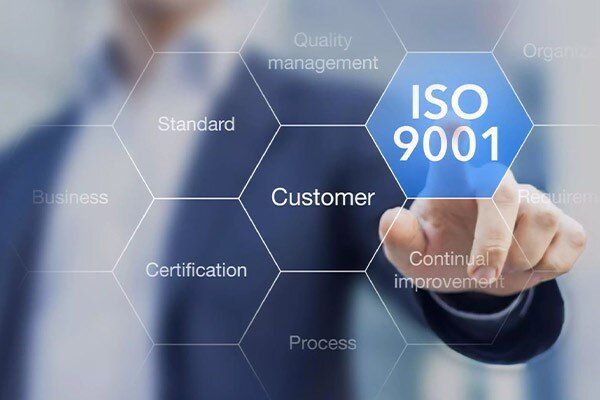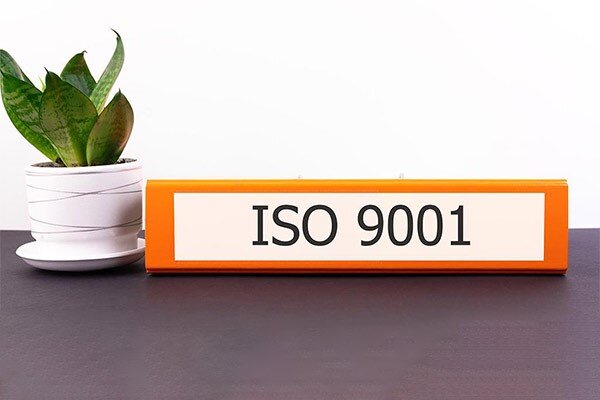What is ISO 9001:2015 compliance?

ISO 9001:2015 Quality Management Systems — Requirements (ISO 9001) is the world's most recognized quality standard. It sets the requirements for a quality management system (QMS) and is designed to help organizations meet the needs of their customers by consistently providing quality products and services that meet regulatory requirements.
It is part of the ISO 9000 series of quality standards which outline the fundamental concepts and principles of an effective QMS. ISO 9001 is the only standard in the ISO 9000 family that can be certified to. With over a million certificates issued across 190 countries worldwide, ISO 9001 is also the most popular out of the 22,000+ ISO standards currently in existence.
ISO 9001 requirements; A voluntary certification
Although more and more organizations across all industries are requiring their suppliers to be ISO 9001 certified to ensure the quality of their products and services, ISO 9001 is purely voluntary and does not involve any contractual, legal, or statutory obligations. ISO 9001 offers recommendations, not regulations.
The benefits of achieving ISO 9001 certification are numerous, including improved company image and reputation, global recognition, and, in most industries with high-ticket products and services, the ability to do business at all. Despite that, many organizations perceive certification as a daunting task and decide to forego the stress and difficulty associated with it. Instead, a lot of them consider mere compliance to be good enough. This is often the case with organizations who are unable to bear the cost of certification or those who do not have the time or resources required to handle the rigors of the auditing process.
ISO certification; QMS against the ISO 9001 is hard
While ISO certification requires organizations to undergo an external audit which is conducted by an independent auditor, assigned by a JAS-ANZ (Joint Accreditation System of Australia and New Zealand) accredited Certification Body, compliance with the ISO 9001 accreditation requires nothing of the sort.
Certifying your QMS against the ISO 9001 standard can therefore appear difficult, however, becoming ISO 9001 compliant requires just as much groundwork. The only difference is that compliance isn’t concerned with the ISO audits and all the work they entail.

Quality Management System ISO 9001; Standard requirements for a QMS
Being ISO 9001 compliant simply means adhering to the requirements of the ISO 9001 standard, without going through the process of having a certification body validate said compliance through a series of audits. An organization is deemed ISO 9001 compliant when its processes are consistent with the standard’s requirements for a QMS. In a way, it can be said that compliance is mostly concerned with operational improvement, while certification is concerned with the same, in addition to the reputational and financial benefits that come with having the International Organization for Standardization (ISO) validate compliance with their trusted stamp of approval. This is not to say that organizations that opt for compliance over certification do not care about these benefits. Quite the contrary. They just chose to let their work speak for itself. For being acquaintance with ISO 9001 definition we suggest you read the related article.

ISO 9001 Quality Management System; 7 guiding principles
All in all, the organization seeking certification and the one only concerned with compliance, will both have to go through the process of implementing a full QMS and establishing policies, procedures, and processes that align with the standard requirements. The only difference between ISO certification and ISO compliance boils down to the type of audit opted for at the end. Organizations seeking ISO compliance will have to self-audit to ensure that their QMS implementation is effective and compliant with the standard requirements, while certification seekers will go through an independent formalized validation process, known as the certification audit.
Regardless of what option your organization opts for, to comply with ISO 9001 requirements, it must adhere to the following seven quality management guiding principles:
Customer focus; Develop more cost
Meeting customer requirements and exceeding their expectations should be the primary concern of an organization. In order to do that, it must first understand their needs. By being attentive to existing client needs, organizations will be able to predict their future needs over time and capitalize on every opportunity to create more value for them. This will in turn lead to higher client retention and sustained success.
Leadership; Working cohesively and creating sense of unity
To ensure an organization’s policies, strategies, resources, and processes are working together cohesively, its leadership must promote a sense of unity of purpose and direction among the workforce to foster a climate where everyone is engaged in the achievement of its quality objectives.
Engagement of people; The need of appreciation
Studies show that engaged employees are 17% more productive. To keep their employees engaged organizations should give them the recognition they deserve and empower them by ensuring they have the right competencies to perform their job effectively.
Process approach; Integrated participation
This principle recommends that organizations should configure their processes in such a way that they operate as a complete system and in an integrated fashion.
Improvement; Internal and external reactions
Successful organizations are those that position themselves on a path for continuous improvement to ensure performance levels are maintained and enhance their ability to react to new opportunities, both internal and external.
Evidence-based decision making; iso 9001:2015
Decisions grounded in data analysis and information evaluation have higher chances of producing the desired results.
Relationship management; Elevate the influx
To ensure continued success, organizations must cultivate healthy relationships with interested parties, such as suppliers and partner networks to boost their impact on their performance.
Leave a Comment